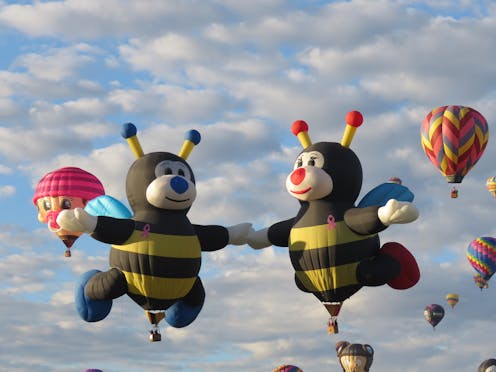What is fake honey and why didn’t the official tests pick it up?
- Written by Emma Beckett, Postdoctoral Fellow (Human Molecular Nutrition), School of Medicine and Public Health, University of Newcastle

Australia has been rocked this week by reports that many products labelled as honey are actually fake or “adulterated” honey.
Capilano, Australia’s largest honey producer, has been accused of selling products mixed with cheaper syrups. But Capilano has hit back, claiming the testing method is unreliable. So what is “fake” honey really made of? And can we be sure of what we’re getting?
Read more: The farmer wants a hive: inside the world of renting bees
What have I been eating?
Honey is a mixture of sugars, mostly fructose and glucose. But honey has particular flavours and properties that come from the flowers and the natural processing the bees do.
Fake honey is generally some honey mixed with other sugar syrups. These syrups come from plants like sugar cane, corn, or rice. They can be cheaper and easier to produce than honey.
While these contaminating syrups aren’t likely to be harmful, they might have different nutrient profiles, sweetness levels, glycemic indexes, and have undergone different processing.
Read more: White, brown, raw, honey: which type of sugar is best?
It is legal to sell honey blends, like glucose and honey, or “honey flavoured sugar syrups” but these need to be labelled so people know what they are paying for.
This isn’t the first fake honey on the market
In 2014 the ACCC fined two companies for selling “Turkish Sugar Syrup” labelled as honey. Food Standards Australia New Zealand (FSANZ) has been aware for some time of concerns about imported honey – it appears that all the affected products contain some imported honey – and recommends that concerned consumers check for country of origin labelling on honey products.
Fake honey has also been previously detected in the United States and Europe.
But don’t they test honey for purity?
The official test in Australia to check if honey is pure is called the “C4 sugar test.” Plants have different ways of producing sugars, using different chemical pathways depending on the plant and the conditions in which it is grown. Bees collect nectar mostly from flowers of plants in the “C3 cycle”, and much less from plants using C4 pathways to make sugars.
The C4 test picks up most fake honey, because most of the cheap sugar syrups used to make fake honey came from C4 plants, like corn and sugar cane. But newer substitutes, like rice, wheat, and beet syrups, come from C3 plants, and so won’t be picked up.
How is this new test different?
The fake honey in this most recent scandal was identified by a method called “Nuclear Magnetic Resonance” (NMR for short). NMR works because all molecules are made up of atoms, and atoms have nuclei at their centres. Nuclei have electrical charges, and many also have a physical property known as spin (the nucleus rotates on its own axis, like the earth).
This means they are sensitive to magnetic fields and the nuclei of each type of atom will move differently when they are applied. Basically, by measuring how the nuclei in the sample respond to different magnetic fields, we can get a fingerprint of what is in the sample. This means it isn’t restricted to just testing for C4 sugars, and it can detect non-honey sugars from any source. This is why some honeys may pass the standard test, but not pass an NMR test.
Read more: A bee economist explains honey bees' vital role in growing tasty almonds
MNR is a very sensitive technique already used in other parts of the food industry, such as testing fruit juices and wines. In honey, it can distinguish between the different types of sugars and detect other components that give honey its unique flavours. This means it can potentially be used to pinpoint the geographical location of honey. This isn’t the official and international standard test, but that doesn’t mean it isn’t scientifically sound. It is a relatively new method that may be adopted by official bodies in the future.
Some argue that NMR isn’t ideal because you can get different results depending on the lab. This can be because of the different reference databases used. However, NMR has been shown to be able to detect honey adulterated with other sugar syrups in a number of studies including, rice syrup and corn syrup.
What should I do?
You probably don’t need to go throwing away your honey. It might have other sugars in it, but it is still safe to eat. All the honey products implicated in this latest scandal contained some imported honey blended with Australian honey. So read the label, and look for Australian sourced honey to increase the chances you are getting what you pay for.
Read more: Unique pollen signatures in Australian honey could help tackle a counterfeit industry
Authors: Emma Beckett, Postdoctoral Fellow (Human Molecular Nutrition), School of Medicine and Public Health, University of Newcastle
Read more http://theconversation.com/what-is-fake-honey-and-why-didnt-the-official-tests-pick-it-up-102573





